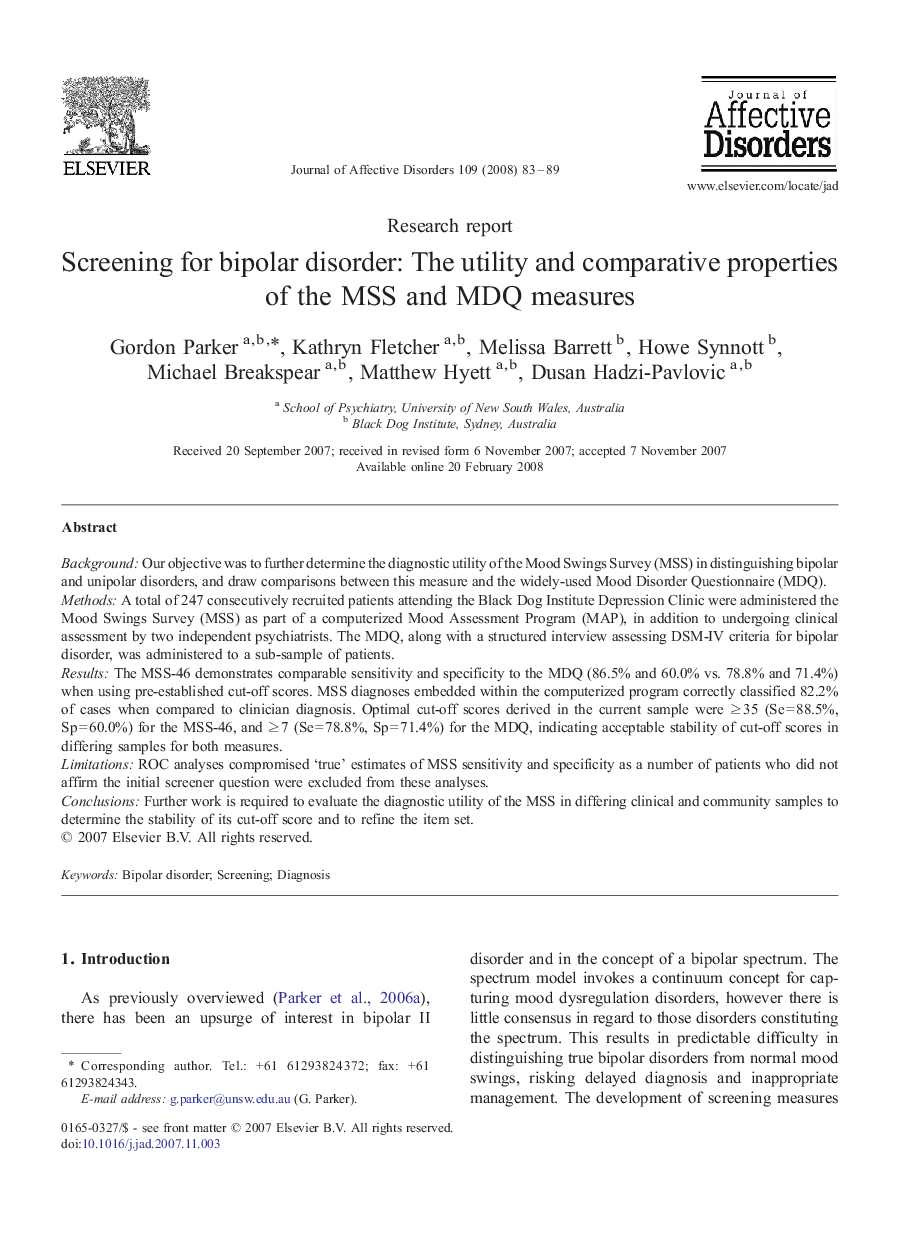| Article ID | Journal | Published Year | Pages | File Type |
|---|---|---|---|---|
| 4187525 | Journal of Affective Disorders | 2008 | 7 Pages |
BackgroundOur objective was to further determine the diagnostic utility of the Mood Swings Survey (MSS) in distinguishing bipolar and unipolar disorders, and draw comparisons between this measure and the widely-used Mood Disorder Questionnaire (MDQ).MethodsA total of 247 consecutively recruited patients attending the Black Dog Institute Depression Clinic were administered the Mood Swings Survey (MSS) as part of a computerized Mood Assessment Program (MAP), in addition to undergoing clinical assessment by two independent psychiatrists. The MDQ, along with a structured interview assessing DSM-IV criteria for bipolar disorder, was administered to a sub-sample of patients.ResultsThe MSS-46 demonstrates comparable sensitivity and specificity to the MDQ (86.5% and 60.0% vs. 78.8% and 71.4%) when using pre-established cut-off scores. MSS diagnoses embedded within the computerized program correctly classified 82.2% of cases when compared to clinician diagnosis. Optimal cut-off scores derived in the current sample were ≥ 35 (Se = 88.5%, Sp = 60.0%) for the MSS-46, and ≥ 7 (Se = 78.8%, Sp = 71.4%) for the MDQ, indicating acceptable stability of cut-off scores in differing samples for both measures.LimitationsROC analyses compromised ‘true’ estimates of MSS sensitivity and specificity as a number of patients who did not affirm the initial screener question were excluded from these analyses.ConclusionsFurther work is required to evaluate the diagnostic utility of the MSS in differing clinical and community samples to determine the stability of its cut-off score and to refine the item set.
